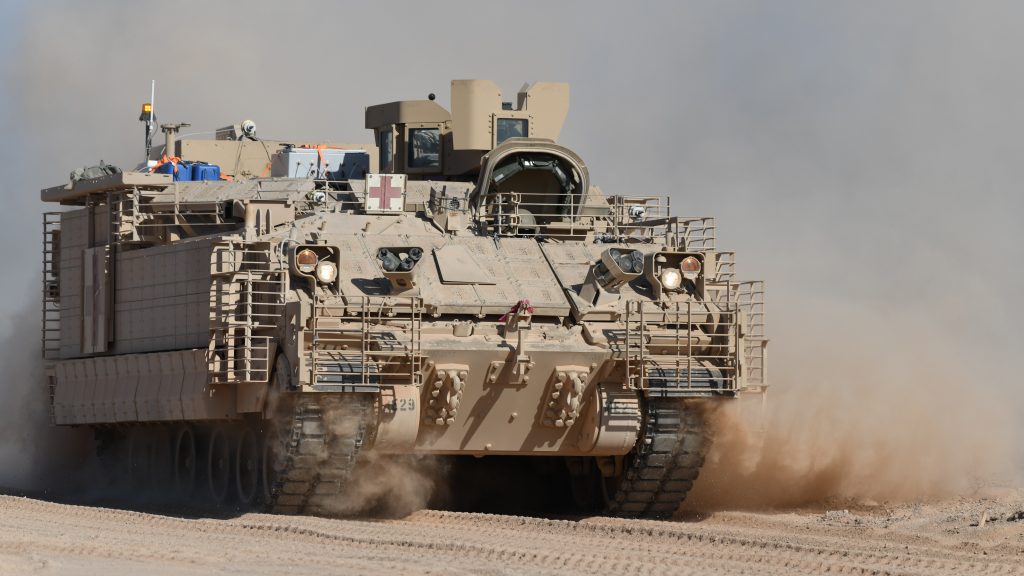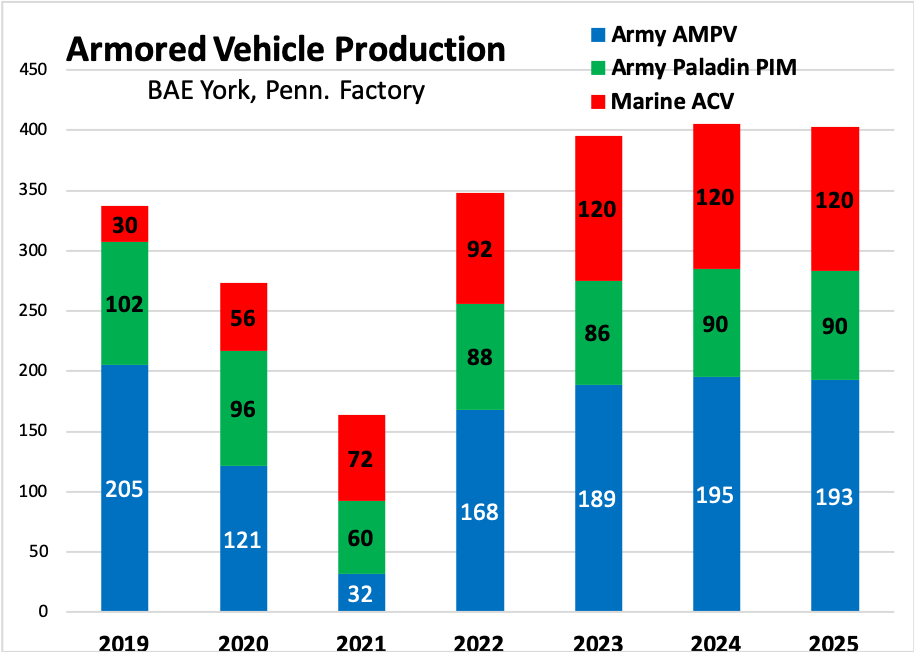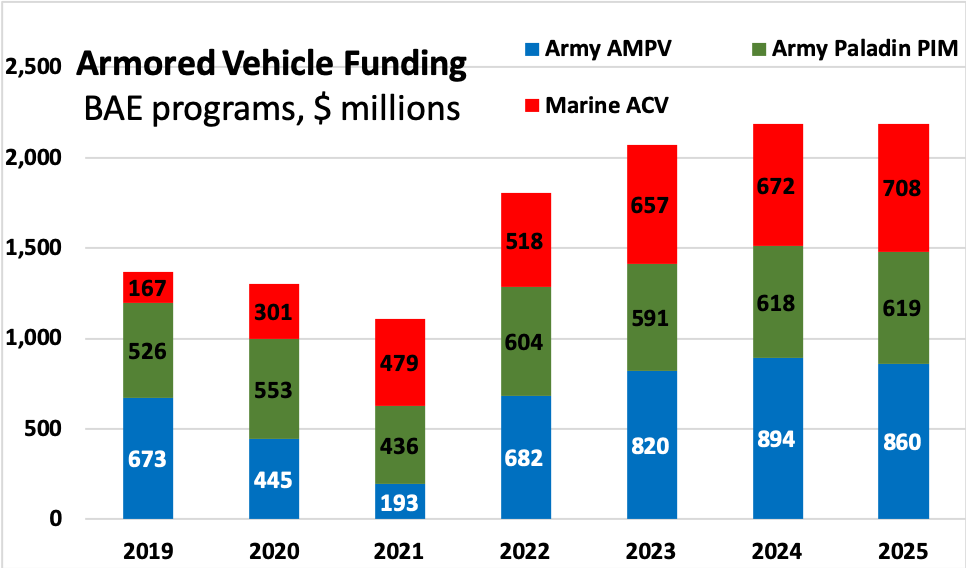
A medical variant of the BAE Armored Multi-Purpose Vehicle. AMPVs will serve as both armored ambulances and mobile operating rooms.
UPDATED with BAE statement PENTAGON: Two of the three armored fighting vehicle programs being built by BAE System’s factory in York, Pennsylvania have been slashed in the 2021 budget. While the Marine Corps continues to ramp up production of its eight-wheeled Amphibious Combat Vehicle, from 56 ACVs in 2020 to 72 in ’21, that increase is swamped by Army cuts to two tracked vehicles, both derived from BAE’s iconic but aging M2 Bradley:
- Production of the turretless utility variant of the Bradley, the Armored Multi-Purpose Vehicle (AMPV), will plummet from 121 in the 2020 budget to just 32 in ’21, recovering to 168 in ’22.
- Production of the upgraded M109A7 PIM version of the Paladin artillery vehicle, which uses the Bradley suspension and drive train, will fall from 96 vehicles (48 howitzers and 48 ammo carriers) to 60, recovering to 88 in ’22.
Those 2022 figures are a forecast in the five-year budget plan, however, not a formal request to Congress, and they might change. “Once you start to get that production line facilitized — and again it’s not going to be one of those things you figure out in a couple months — it’s going to be an iterative every-year look at what’s the right rate [and] what’s the most effective and efficient way to run that line,” deputy assistant secretary John Daniels told reporters yesterday.

The Army had already reduced production of both BAE vehicles in its 2020 request last year – along with over 180 other programs – as it ruthlessly scrubbed its current programs for savings it could reinvest in higher-priority, higher-tech weapons for future wars with Russia or China. But BAE’s York plant has also had trouble keeping up both quality-control standards – notably for welding armored hulls – and production rates as it tried to expand its tooling and its workforce to meet Army demand, attracting the personal attention of then-Army Secretary Mark Esper.
“Part of the problem was “getting the production facility right-sized,” Daniels said, “[and] there were some additional unforeseen issues in the industrial base” – presumably a reference to the quality control issues.
So the Army decided to “slow the production curve to get a little bit of time to get a better vehicle,” he said. “It would delay it by about six months.”
UPDATE A BAE spokesperson gave us the following statement Thursday morning:
“We have made and continue to make significant investments at our facilities in Aiken, South Carolina; Anniston, Alabama; Elgin, Oklahoma; and York, Pennsylvania, and in our industrial base capacity that are already paying off. These investments include advanced robotic welding technology that is already in use, and the expansion of facilities in all four of our vehicle manufacturing locations, including the addition of 250,000 square feet in Elgin. These investments have proven to be successful in terms of vehicle delivery quantity, quality and consistency. We are dedicated to working closely with the Army and Marine Corps to meet their requirements and deliver high-quality vehicles on time.”

Norway’s air defense priorities: Volume first, then long-range capabilities
“We need to increase spending in simple systems that we need a huge volume of that can, basically, counter very low-tech drones that could pose a threat,” Norway’s top officer told Breaking Defense, “so we don’t end up using the most sophisticated missile systems against something that is very cheap to buy.”


























